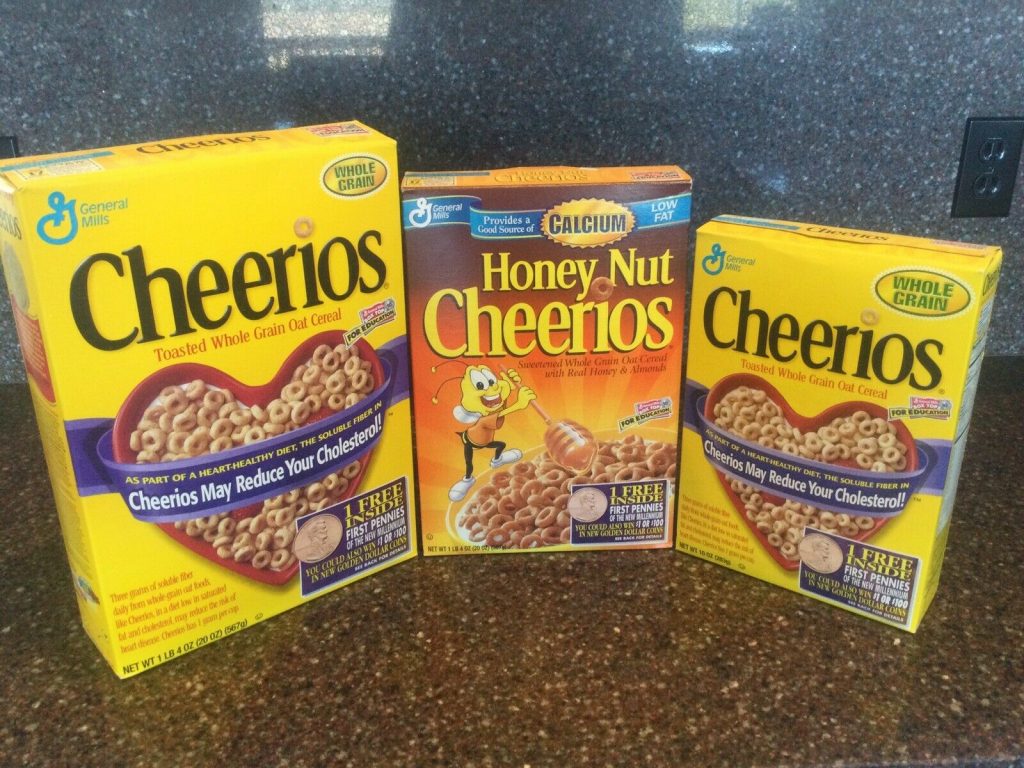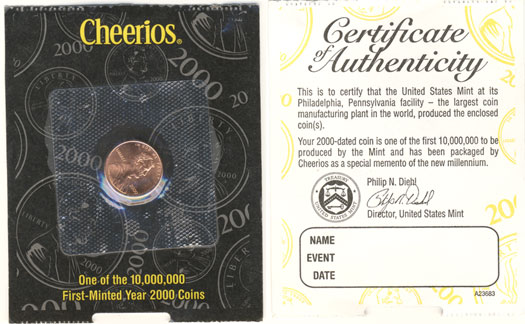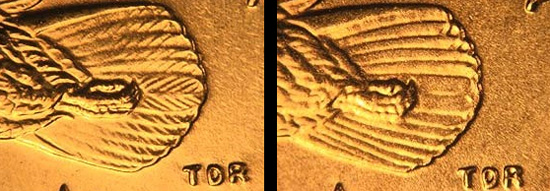The Golden Boxes of Cheerios

Pictured above are three boxes of Cheerios, the breakfast cereal. You can probably get a current version of any of those three boxes at the grocery store for about $4, give or take. The boxes above, though, aren’t ones you’ll find at the local supermarket or food store or whatever you call it. If you did, you wouldn’t want to eat the stuff inside — those boxes are from the year 2000.
And about a week or so ago, someone bought them for $1,195.
That’s a pretty bad investment if you’re looking for something to eat in the morning; there’s nothing particularly special about expired Cheerios. But old cereal isn’t the only thing you’ll find inside those Cheerios boxes. At the time, the United States Mint was about to roll out a new $1 coin depicting Sacagewea, a teenage Native American woman who, almost 200 years prior, helped the Lewis and Clark expedition find its way to the Pacific Northwest. General Mills — they make Cheerios — partnered with the Mint to help promote the new coin for the new millennium. (Let’s put aside that the new millennium wouldn’t really start until January 1, 2001.)
If you purchased one of the boxes above (ideally back in 2000, when they cost only a few bucks per box), you were guaranteed to get at least $0.01 back — and maybe a good amount more. Coin Update, a coin collecting site, explains:
The United States Mint provided General Mills with the first 10 million 2000-dated Lincoln Cents, as well as 5,500 of the new Sacagawea Dollars. Through the promotion, each box of cereal would contain one of the 2000 cents, with every 2,000th box containing a new Golden Dollar, and every 4,400th box containing a certificate redeemable for 100 Golden Dollars. These cereal boxes actually represented the first release of the Sacagawea Dollar to the public, as shipment to Federal Reserve Banks did not begin until January 18, 2000.
The story should have ended there, but a handful of coin collectors decided that maybe, just maybe, the Cheerios Coins may be worth something more than their face value. Each of the pennies was encased, as seen below, with a certificate of authenticity, attesting that the penny was one of the first 10 million minted for the new year. That made them potentially special. The dollar coins, if you were lucky enough to get one, were included in the same wrapper. (Here’s one such case, but it’s empty.)

So, some coin collectors began collecting these coins, as coin collectors do. And five years later, some of them cashed in — big time.
It turns out that the United States Mint made a decision — a mistake, perhaps — much to the benefit of some collectors. There’s an eagle depicted on the back of the Sacagawea dollar, and sometime after the Mint sent the first batch or two of dollar coins to General Mills, the government changed the design of the eagle’s tailfeathers. The image below (via a website dedicated to Sacagawea dollars) highlights that difference. On the right is the design the one found in circulation. On the left is the design found on some, but not all, of the Cheerios Dollars.

Per the above-linked site, “on coins produced for circulation (shown above at right), the central line is recessed and there is considerably less detail. The modification was made prior to production for circulation in order to create a more realistic rendering of the tail feathers.” And the Mint never got around to telling anyone — in fact, this small detail change wasn’t noticed until around 2005. By then, all of the special Cheerios boxes had been sold and many of the Sacagawea dollars had been opened and spent. According to one coin buyer, “only about 80 of the original 5,500 Cheerios mintage has been accounted for.” (That site incorrectly presumes that all of the Cheerios dollars have the error; they do not.) But if you happen to have one, it may be worth as much as $4,000.
As for the boxes above, they’re effectively lottery tickets. The buyer is guaranteed to get at least three Cheerios pennies inside, which regularly sell for $15or so, and they have a nonzero chance at getting a dollar, which can fetch $50 or more. If you’re extraordinarily lucky, though, maybe the purchaser will find themselves tripling their investment.
For the rest of us? You may want to check any Sacagawea dollars you have lying around.
Bonus fact: Beyond being horribly stale, the box of Honey Nut Cheerios pictured above does have one important difference from a box you’d find in your local corner market: there’s a good chance that today’s Honey Nut Cheerios do not actually contain nuts. Before 2006, General Mills listed ground almonds among the ingredients in Honey Nut Cheerios, but as Consumer Reports notes, “that’s been replaced with ‘natural almond flavor.’” And, again per Consumer Reports, “most ‘natural almond flavor’ comes from the pits of peaches and apricots, which are a waste product when those fruits get processed.” Unfortunately for those who are allergic to almonds, this isn’t a big help, as, per CR, “some people who are allergic to almonds are also allergic to these fruits.”
From the Archives: Why We Pour Milk on our Cereal: Personally, I like most cereals dry, but that’s not the heavenly way, I guess?
